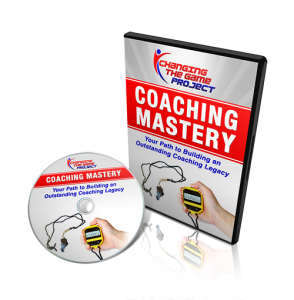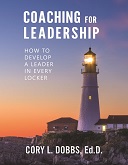Today’s athletes are still motivated by the same things. What has changed is the amount of competition there is for the athletes’ attention
This post provided by the Coaches Network
By Ron McKeefery
Ron McKeefery, MA, CSCS*D, MSCC, is Vice President of Performance and Education for PLAE. Previously, he served as a strength and conditioning coach at the professional and collegiate levels, most recently as the Director of Strength and Conditioning at Eastern Michigan University. Named the 2008 Under Armour Collegiate Strength and Conditioning Coach of the Year and 2016 NSCA Collegiate Strength and Conditioning Coach of the Year, he is the founder of the popular Iron Game Chalk Talk podcast and the author of CEO Strength Coach
We have all heard coaches who reminisce about the “good old days,” when sports were much harder and athletes cared more and were more disciplined. That mindset has never resonated with me. Having coached for multiple decades, I believe athletes are still motivated by the same things. They still want to win, still love their teammates, and still want to make themselves and their families proud.
What has changed is the amount of external information, people, and technology competing for players’ time and attention. As a result, strength coaches have had to work harder to get them to buy in.
It would be easy to blame athletes for this difficulty. However, it really comes down to the fact that, often, we are not often prepared for the challenge. This article provides a game plan for connecting with today’s athletes and capturing their time and attention.
The framework I use comes from the book Switch by Chip and Dan Heath. In it, the authors present the example of a man riding an elephant down a path to demonstrate the components of change. The man symbolizes the rational side, the elephant the motivational side, and the path the situational world. They state that to bring about change, you must first direct the rider, then motivate the elephant, and, finally, shape the path. In this week’s blog, I’ll focus on directing the rider.
In a perfect world, getting a certain result from athletes would be easy—we’d tell them to do something, and they’d do it. But we don’t live in a perfect world. If the rider (rational side) on top of the elephant (motivational side) tells it to go right, and the elephant wants to go left, it’s going left.
Translating this to working with athletes, we can tell them to be on time for training, go to bed early, and eat the right things. Yet, if we do not guide them on how to put those directives into action, they can end up confused and unproductive. As a result, they might opt for sleeping in, partying all night, and eating pizza instead.
Of course, this doesn’t mean you stop trying to get the results you want. Rather, you simply have to reinforce what athletes should do and how they should do it. Here are three ways to provide this direction:
Focus on the positive: When we want an athlete to change, we often tell them what not to do. This positive-negative asymmetry can cause them to lose focus and ignore the instructions completely.
A better option is to lead the athlete to the desired solution or outcome. Instead of telling them, “Don’t do this,” demonstrate the proper way of doing something or point out someone else doing it correctly.
Keep it simple: Strength coaches are notorious for killing ourselves to come up with complex solutions to our teams’ problems. But this only confuses the athletes. Simplifying the solution gives them a better understanding of what they should do and how.
For example, early in my career, I had an issue with football players being late for training or missing sessions. To combat this, I created 10 different lifting groups that met throughout the day. But despite me working 10 straight hours and eating my lunch on the weightroom floor so I could supervise them all, I still had athletes arriving late or skipping their groups.
I realized that my error was giving the players too many options. As a result, athletes were scattered all over the place at any given time—some would be in class, some would be eating cereal in their underwear, some would be asleep in bed, and some would be lifting. Compared to getting your butt kicked in the weightroom, the other three options sounded much more appealing.
It wasn’t until I created two lifting groups—offense/defense or power/skill—and had one group meet while the other lifted that our tardiness and absence issues vanished. Having all of the players in the building at the same time eliminated athletes’ excuses for missing training and made it cool to be where the team was.
Point to a destination: Goal setting is not a new tactic in strength and conditioning circles, but I’ve noticed the approach has shifted from dream building to dream killing. I have witnessed many goal-setting meetings where a strength and conditioning coach asked a player for their current numbers and then proceeded to set an arbitrary benchmark for that training period—often cautioning the athlete not to think too big as they set their goals. What is missed here is a great opportunity to “define good goals” and cater to the athlete’s rational side.
For example, a great chunk of my experience has been working with football players who aspired to the NFL. I have coached hundreds of draft picks, so it’s easy for me to tell whether an athlete has the potential to make it. But if I tell a prospect flat out that he doesn’t have a chance, he’ll tune out everything else I say. Instead, I use the previous year’s NFL combine results as the definition of a “good goal” for the athlete to aspire to. This gives him an idea of what needs to be done to reach his objective and how hard he will need to work to get there. It also shows that I can help him achieve his dream.


